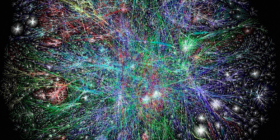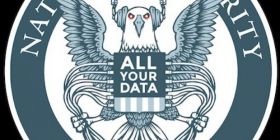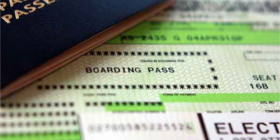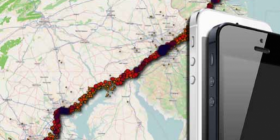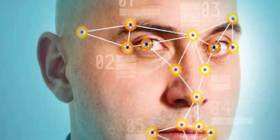Our comprehensive report on surveillance in Canada is available. Download it here.
Trend 2 – The Rise of Security Culture
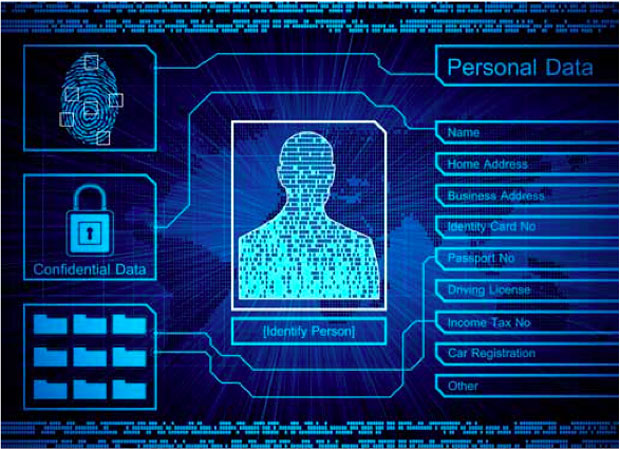
Introduction
One of the key forces driving the expansion of surveillance in Canada, especially in recent years, has been a collective focus on risk management and security. Ironically, although ordinary Canadians do indeed face safety, health, and financial risks, we are, on average, probably safer and better off than ever before. For example, our average life expectancy in the new millennium has climbed past age eighty.1 Why, then, are Canadians so concerned with risk and security in the second decade of the twenty-first century? The events of 9/11 cannot fully explain our concerns. Although they provided a key impetus for increased security, the drive for risk management and security was in place before 9/11 and has expanded well beyond the antiterrorism front. Below, we discuss some of the reasons for this increased focus on risk, look at examples, and provide links to cases where it has led to new and more intensive surveillance—surveillance that itself creates new risks to privacy, fairness, and freedom.
What We Fear, We seek? Changing Notions of Risk and Security
Since the beginning of the 1980s, risk has been an important word not only in government and business but also in public discussion and academic research. That same time period has seen the rise of professional risk managers and the development of increasingly complex risk-management plans and techniques on the part of government, businesses, and other organizations. Indeed much of contemporary life is organized around how we talk and think about risk.2
One dominant trend in thinking about risk has involved the spread of systematic ways of calculating and managing risks so that we can govern ourselves. Increasingly, this is done through the application of scientific reason. Statistics are an essential tool in the arsenal of risk management, and they are often related to predictions about human behaviour. In a risk-oriented society, it becomes increasingly important to collect data—and more data—about our behaviour and the risks we face.
A focus on risk brings a new emphasis on surveillance, data collection, and risk analysis. We are used to thinking of security in terms of national security against threats like terrorism, especially since 9/11, and social security as potentially provided by governments. But the notion of security has expanded since the 1980s to cover a number of other areas, including environmental security and food security, and behaviours that were once commonplace are now considered too risky to be tolerated.
Surveillance and Risk
Greater surveillance has accompanied this increased concern about risk for two reasons. First, the hunger for data to fuel risk calculations has weakened privacy norms that traditionally required others, especially scientific researchers, to ask for permission before they collect personal information about people. Second, once risks are identified, it becomes logical to use surveillance to monitor people both to ensure that they do not behave in a risky way and to manage the consequences when they do. The federal government, for example, tracks which Canadians leave the country in order to reduce the risk that someone who is collecting unemployment insurance benefits may be defrauding the system because he or she is on vacation and therefore not available for work. Similarly, life insurance companies require disclosures about personal behaviours that affect the costs of health coverage. Overall, while surveillance can be used for care and control, a society focused on risk and security easily turns to surveillance to better understand and better manage behaviours that are viewed as risky.
Increasing Risks, Decreasing Trust
Ironically, so much focus on security can breed insecurity. The more we seem to focus on managing risk, the more it seems to be beyond our control in many important ways. Our society’s perception that risk is everywhere prompts ever more strenuous efforts to control it. And the more we ponder and discuss risks, the more this leads to a climate of doubt and fear. This, in turn, leads to the demand for yet more knowledge about risk, creating a vicious circle that helps to justify surveillance in the pursuit of security.
In this way, there is something paradoxical about this heightened awareness of risk and fear: even though we are probably, on average, safer than ever, people tend to spend more energy dwelling on the risks that remain. Employment is less stable and more precarious, the governmental social safety net is fraying, and Canadians are confronted with an array of new social and technological risks. Much of our modern life is oriented toward helping individuals understand and secure the future against all manner of risks.
Research in risk perception reveals the “dread factor”: people tend to focus on certain risks because of their terrifying nature, even if they are improbable.3 Other research also highlights the way that the risks we have more immediate knowledge about become more relevant to us.4 For example, the American public was immersed in massive coverage of hijacked jets crashing into the Twin Towers on 11 September 2001. Notwithstanding this horrific incident, flying is, in general, safer than driving, but one striking case of 9/11 made such a powerful impression that air travel reduced dramatically the following year in the United States; ironically, car traffic correspondingly increased, leading to a dramatic rise in the number of deaths on the road. A German psychologist, Gerd Gigerenzer, calculated that there were 1,595 additional fatalities in the United States that year as a result.5
Our perceptions about risk are shaped considerably through the role of experts and the media. We often rely on experts to identify risks and to help us manage them. Experts, however, are often contradicted, both by other experts, powerful lobby groups, but also through an increasing amount of information and knowledge that is afforded through the Internet. While the net offers a brilliant democratic opportunity for information exchange, it can also foster a climate of perpetual doubt. In this context, research suggests that most people tend to make sense of risk in terms of their feelings and impressions, not in terms of numerical probabilities.6
In terms of media, risks are often amplified. The news media often focus our attention on systematically improbable but terrifying risks. A focus on dramatic individual events at the expense of the big picture fosters a tendency to heighten concerns about certain risks.7 For example, the amount of attention given to crime, especially violent crime, has increased measurably over the decades, in one case more than doubling in two British newspapers between the 1940s and 1990s. This was partly due to the influence of news consultants, who beginning in the 1980s, counseled that crime coverage boosts ratings.8 The increasing fragmentation of mass media audience into more specialized and politically polarized niches splinters consensus and also adds to a culture of insecurity and distrust. Differences in coverage between major networks such as the CBC-TV and Sun-TV, for instance, also yields opposing pictures of the world. In addition, while social media such as Facebook and Twitter offer critical political discourse that can challenge official views, this discourse (while empowering), also adds to the sense that traditional certainties have been undermined. No matter what the reason, the result is a picture of a world of proliferating risks, based on dramatic events that shock and disturb—where consensus on our collective response are rife with tension.
Policy Making in a Risk Society
From this perspective, surveillance is an appropriate response to a generalized sense of insecurity. Psychological tendencies, the media, and politicians all contribute to an atmosphere in which surveillance measures are often introduced on the basis of one dramatic and horrifying but statistically improbable incident that receives a great deal of media, political, and public attention. The increase of security after 9/11 is the most striking example; a more local one is the piecemeal introduction of public video camera surveillance in different Canadian cities in response to the outcry over particular individual violent crimes.
Given our growing intolerance of risk, it appears logical to implement surveillance measures both to provide more data to help identify risks and to protect against offenders. The actual nature and level of the risks become less important than the need to appear to be in control. For example, the federal government introduced a range of sweeping and costly law-and-order measures in 2012 even though crime, including violent crime, was statistically at a forty-year low.9 As Canada’s Public Safety minister put it in a Senate committee meeting in early 2012, “Let’s not talk about statistics. Let’s talk about danger.”10
Risk is increasingly being downloaded from governments onto both individuals and businesses. Vulnerable groups in particular, such as the old and the poor, may become increasingly marginalized and disenfranchised. Moreover, because those who are most vulnerable to risk include those whose actions contribute to risk, certain groups of people—for example, particular ethnic minorities or troubled young people—are often seen not only as at-risk but also as risky themselves. Marginalized people are exposed to more risks and are categorized as bad risks. Thus, people who might need our help are also, paradoxically, viewed as a threat. Emphasis is placed on the threat posed by the marginalized rather than on the help that they might need. A risk society is thus also increasingly what criminologist Jock Young calls an “exclusive society,” in which marginalized groups are cut off from desirable forms of security.11 This is where the social sorting function of surveillance is key—surveillance helps us to classify and monitor sets of people deemed risky and, sometimes, to exclude them from full participation in society.
Surveillance as Risk?
In our risk society, some risks get hyped, but it is important to note that real new risks do exist. Modernization is a double-edged sword: it simultaneously reduces and enhances risks. Surveillance itself is a good example. Although it is supposed to help manage risks, it also creates new risks to privacy, fairness, and freedom.
Science and technology are given a dominant role in helping us solve complex problems, helping us to manage risk, but they also create new risks. Climate change, computer viruses, or prolonged exposure to electromagnetic waves, for instance, are all unintended consequences of newly developed technologies and scientific solutions.
However, information technologies are especially notable for ushering in unintended consequences. While information management, whether on behalf of government or business or others, is valuable for facilitating travel, entertainment, communication, industrial production, and economic transactions, it also raises issues of surveillance and privacy. Advances in areas such as surveillance cameras, biometrics, genetic science, location and tracking systems, electronic miniaturization, and the Internet have made the task of information gathering—as well as its storage, retrieval, and manipulation—a more central part of our lives than ever before. Social media technologies and persistent mobile computing capabilities through the use of smartphones present novel, largely technologically-driven risks, to personal privacy. Legal regulation often lags far behind the deployment of such new technologies.
Conclusion
People are inclined to consider the exposure to risk in very disproportionate terms. Grasping the “security” trend helps us to understand the broader social context in which a wide range of new surveillance measures continue to emerge in Canada. It also facilitates discussion of some of the factors that may make it easy for these measures to find support but difficult to question them. One encouraging note is that, by and large, compared to years past, the Canadian public is more educated and informed, less trusting, and more critical of various authorities and institutions in general. If this adds to a sense of uncertainty and insecurity for Canadians, it also provides fertile ground for asking questions about just how much risk management, security, and surveillance is too much and about the best ways to balance risk and rights. Read the full trend in the free download of the Transparent Lives: Surveillance in Canada book.
- 1. See Dan Gardner, Risk: Why We Fear the Things We Shouldn’t—and Put Ourselves in Greater Danger (Toronto: McClelland and Stewart, 2008).
- 2. See Ulrich Beck, World at Risk (Cambridge, UK: Polity Press, 2009); Anthony Giddens, Runaway World: How Globalization Is Reshaping Our Lives (London and New York: Routledge, 2003), chap. 2; and Anthony Giddens, Modernity and Self-Identity (Cambridge, UK: Polity Press, 1991).
- 3. Paul Slovic, Baruch Fischhoff, and Sarah Lichtenstein, “Why Study Risk Perception?” Risk Analysis 2, no. 2 (1982): 83–93.
- 4. Amos Tversky and Daniel Kahneman, “Judgment Under Uncertainty: Heuristics and Biases,” Science 185, no. 4157 (September 1974): 1124–31.
- 5. Cited in Gardner, Risk, 4.
- 6. William Leiss and Douglas Powell, Mad Cows and Mother’s Milk: The Perils of Poor Risk Communication, 2nd ed. (Montréal and Kingston: McGill-Queen’s University Press, 2004), 27–28.
- 7. Richard Ericson, Patricia Baranek, and Janet Chan, Visualizing Deviance: A Study of News Organization (Toronto: University of Toronto Press / Milton Keynes, UK: Open University Press, 1987).
- 8. Margalit Fox, “Frank Magid, Creator of ‘Action News,’ Dies at 78,” New York Times, 9 February 2010.
- 9. See Shannon Brennan, Police-Reported Crime Statistics in Canada, 2011, Statistics Canada (Ottawa: Minister of Industry, 2012), http://www.statcan.gc.ca/pub/85-2-x/2012001/article/11692-eng.pdf, 6.
- 10. See Meagan Fitzpatrick, “Omnibus Crime Bill Hearings Underway in Senate,” CBC News, 1 February 2012, http://www.cbc.ca/news/politics/omnibus-crime-bill-hearings-underway-in-....
- 11. Jock Stuart Young, The Exclusive Society (Beverly Hills, CA: Sage, 1999).
